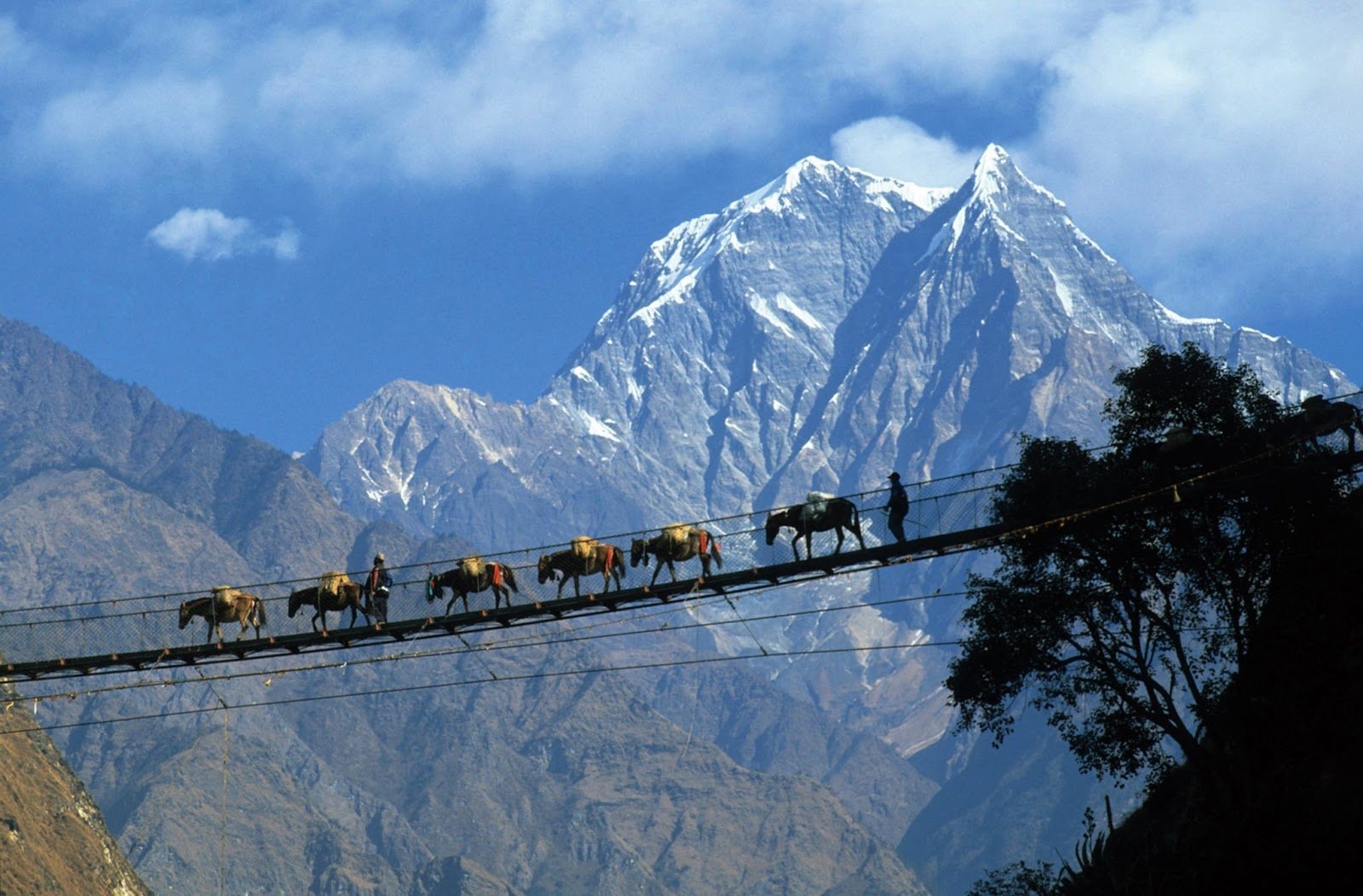Road to Redemption: Overcoming Nepal's Infrastructure Crisis for Tourism's Revival

Nepal, a land of stunning landscapes, diverse cultures, and breathtaking beauty, has the potential to shine as a premier global tourist destination. The Himalayan nation's appeal is undeniable, attracting adventurers, trekkers, and culture enthusiasts from across the world. Yet, Nepal's vast tourism potential remains largely untapped, and the prime culprit behind this missed opportunity is the dire state of its road infrastructure.
Imagine a journey from Kathmandu to the picturesque city of Pokhara, a mere 200 kilometres away. In many countries, this would be a journey of a few hours at most. But in Nepal, it stretches over 12 hours, turning what should be an exciting adventure into a gruelling and exhausting expedition. Similarly, the road trip from Kathmandu to Lumbini, the birthplace of Lord Buddha and a UNESCO World Heritage site, a journey of approximately 300 kilometres, can extend to 12 to 13 hours. It's a situation that not only disappoints tourists but also erodes the economic prospects of the tourism industry in Nepal.
Tourists seek convenience, safety, and comfort. The long, uncomfortable, and perilous road journeys in Nepal detract from the allure of its picturesque destinations. Prolonged travel times due to road conditions result in fatigue, discomfort, and even safety concerns, impacting the overall tourist experience. As a result, potential visitors find Nepal less attractive, ultimately wasting the country's tourism potential.
However, the repercussions go beyond tourists' experiences. Nepal's tourism industry, a significant contributor to the nation's economy, takes a severe hit. Tourists who spend excessive hours on the road have less time to explore and engage in activities that contribute to the local economy. Visits to cultural sites, dining at local restaurants, and shopping for souvenirs all become constrained. This not only disappoints tourists but also leads to substantial revenue losses for Nepal.
What exacerbates this situation is the competitive disadvantage Nepal faces. Neighbouring countries like India, known for exceptional roadways, offer well-maintained roads and efficient networks. They significantly reduce travel times to popular destinations, setting a high standard. As a result, Nepal struggles to compete, putting the nation at a significant disadvantage in attracting tourists.
The heart of Nepal's road infrastructure challenges lies in leadership, or more accurately, the lack of effective leadership. Corruption, lack of focus, and inefficient resource allocation have plagued road development efforts. Strong and accountable leadership is crucial for setting priorities, allocating resources, and driving development, not only in road infrastructure but across all aspects of the country's progress.
To make matters worse, the impact of poor road infrastructure is not theoretical but painfully real. It's seen in the more than 170,000 tourists who cancelled their bookings to Nepal after watching disastrous travel videos. These videos, created by travellers who endured gruelling journeys from Kathmandu to Pokhara and Kathmandu to Lumbini, paint a stark and unappealing picture of Nepal's travel conditions. It's not just about delayed arrival; it's about uncomfortable, tiring, and often perilous journeys.
Moreover, the repercussions of Nepal's road infrastructure crisis extend beyond the tourism sector. Airlines such as Air Jazeera have withdrawn flights from Bhairahawa due to the current road status. The inability of people to reach Bhairahawa, whether from the east or the far west of Nepal, is a direct consequence of the road infrastructure issues. This situation has contributed to the failure of Bhairahawa International Airport and, by extension, Pokhara International Airport. The connectivity issues caused by the state of the roads have severely hindered these airports' ability to attract and facilitate tourism, leading to significant setbacks for the region's economic development.
Adding to these challenges is the imposition of Value-Added Tax (VAT) on air tickets. This indirect taxation adds further burdens to both tourists and struggling tourism entrepreneurs, putting additional stress on an already beleaguered industry.
Collectively, the disastrous state of road infrastructure, withdrawal of flights, and imposition of VAT on air tickets send indirect messages to Nepal's tourism entrepreneurs. These messages imply that it might be more prudent to seek opportunities abroad, mirroring the trajectory of labourers leaving the country. The broader implication is a loss of faith in leadership's ability to provide a promising future within Nepal.
The situation raises a profound question: why should one respect their leaders when they cannot confidently advise their own children to stay in Nepal for a better future? The current state of infrastructure development and the overall situation of the country has left many citizens pondering this issue. It becomes evident when observing a trend where bureaucrats, politicians, and influential individuals are sending their children abroad for education and opportunities. This raises the question of whether innocent
investors and ordinary citizens should continue to invest their hopes and futures in Nepal when the nation seems to be ruled by a generation of leaders marred by corruption, unethical behaviour, and a lack of vision. These questions are not merely rhetorical; they reflect the growing disillusionment and loss of faith in the nation's governance.
Nepal is not alone in the neighbourhood when it comes to the challenges of road infrastructure. Countries like Bhutan, known for their cleanliness, natural beauty, and professionally managed tourism, have managed to overcome similar challenges by investing in efficient road networks. However, it's crucial to emphasize that Nepal has its unique strengths, and with the right leadership and investments, it can rise to the occasion and offer a tourism experience that rivals the best in the world.
Furthermore, neighbouring India stands as an exemplar in exceptional roadways, setting high standards for transportation networks. Its well-maintained roads provide a smooth and efficient experience for travellers. Nepal, too, can learn valuable lessons from its neighbours, both in terms of successful models and the consequences of inaction.
The journey towards reclaiming Nepal's potential as a prime tourist destination is a challenging one, but it is not insurmountable. A commitment to effective leadership, transparency, investment, and efficient resource allocation can make it a reality. The road to redemption is paved with decisions that will define Nepal's future, inspiring confidence in its citizens and rekindling the allure of its picturesque landscapes.
The question is whether the leaders of Nepal are willing to heed this call and steer the nation towards a brighter future. It's not just about improving roads; it's about revitalizing Nepal's promise to its people and the world. The nation has a choice to make, one that will determine whether the "Road to Redemption" leads to a prosperous future or remains marred by the struggles of the past.
The failure of Bhairahawa International Airport and Pokhara International Airport is a glaring illustration of the consequences of inaction. These airports, meant to serve as gateways to Nepal's scenic treasures, find their success inextricably tied to the state of the roads. If these roads remain in disrepair, they will continue to hinder the growth of the aviation sector and the tourism industry as a whole.
In publishing this message, we call upon the leaders to rise to the occasion, for the sake of Nepal, its citizens, and the world that longs to explore its beauty. It is a call for accountability, transparency, and, above all, action. Nepal's potential is vast, and its people are resilient, but they need leaders who can pave the way to a future where the country's tourism thrives, where citizens find opportunities at home, and where the allure of Nepal's landscapes is matched by the efficiency of its roads.
The road to redemption is before us. It is a road that, when well-paved, can lead Nepal to a brighter future where the world visits in awe, where businesses flourish, and where citizens no longer ponder whether they should send their children abroad for better prospects. It is a road worth travelling, and it is one that Nepal must embark upon with determination and foresight.


Leave Comment